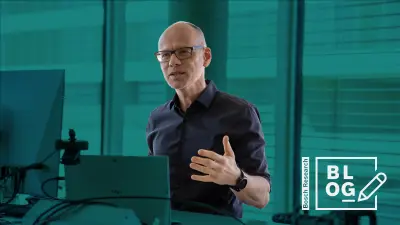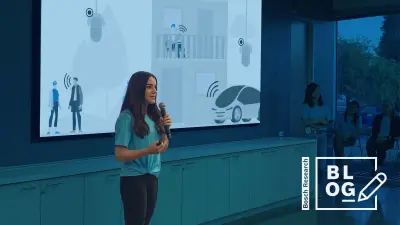If you don’t like how it sounds, you won’t buy it
Bosch Research Blog | Posted by Dr. Andreas Henke, 2022-11-17

Product sound is crucial to buying decisions and quality perception. However, as a system quantity, product sound is available rather late in the product development process. We enable prediction and understanding of human-like product sound rating.
As a cross-divisional project team, our vision is to pave the road for Bosch to become equally well known for superior product sound as it already is for outstanding product quality.
To achieve this goal, we are working on methods for predicting product sound on the end-user level. Using artificial intelligence for human-like product sound rating, we set up an analysis and automation tool environment that enables a more efficient and effective evaluation of product acoustics in Bosch's product divisions.
The progressing development in electric vehicles (e.g., electric propulsion and electric-driven auxiliary units) and other fields such as building technology (e.g., heat pumps) leads to new product sounds. In addition, some product sounds are less masked by other sound sources as these are being replaced, e.g., internal combustion engine being replaced by electric powertrain.
Thus, developing products that satisfy current requirements on product acoustics is becoming more important and more challenging.

Since Bosch’s product divisions face similar challenges, the cross-divisional project "Mastering Sound" strives to develop new methods, and to process known methods, in order to support the divisions as they advance further and develop acoustically superior products.
One of these challenges is to estimate the product sound on the end-user level without mounting the Bosch product (e.g., brake system) into its destination environment (i.e., vehicle). The acoustic behaviour of the product is strongly influenced by the dynamic interaction with the structure of its environment. However, when mounted, insights on the product acoustics are delivered rather late in the development process, when design adaptation and optimization can only be realized at high cost. This is why adopting virtual methods to predict product sound as early as possible is preferable.
However, product sounds, both measured and predicted, have to be rated reliably and objectively on the end-user level during product development and before market-launch approval can be granted. Since extensive market studies are too costly and time consuming, the team is working on an automated rating algorithm which utilizes artificial intelligence (AI). To ensure prediction accuracy and objectivity, these algorithms are trained with data obtained by specifically developed large-scale end-user surveys.
These approaches and the necessary acoustic analyses require extensive data analysis. But there is also a great opportunity for automation and enhanced efficiency. To this end, the team is developing a framework of automation and analysis tools which are being combined with existing and acknowledged proprietary analysis tools.
What are your thoughts on this topic?
Please feel free to share them or to contact me directly.

Author: Andreas Henke
Andreas studied mechanical engineering at Paderborn University and at the Technical University of Nova Scotia, Canada. He holds a Ph.D. in this field.
His career at Bosch started in 2000 at Corporate Research where Andreas researched brake systems fulfilling the requirements of the future. In 2008 he switched to project management at Bosch Power Tools where he managed teams developing rotary and demolition hammers from first concept solutions over building up the requisite assembly lines, up to launching the products on markets around the globe. In 2015 Andreas returned to Corporated Research. As a line manager, he was responsible for the Structural Dynamics and Acoustics competence segment. From this role he succeeded in obtaining funding for a cross-divisional project in 2019 tasked with accelerating the product development process and designing products with superior sound. To achieve this, most Bosch product divisions are jointly optimizing analysis capabilites in terms of sound design and noise reduction of Bosch products.
Further Information
The following resource provides a more in-depth understanding of Sound Design and its application for use cases of interest to Bosch.
Publication


